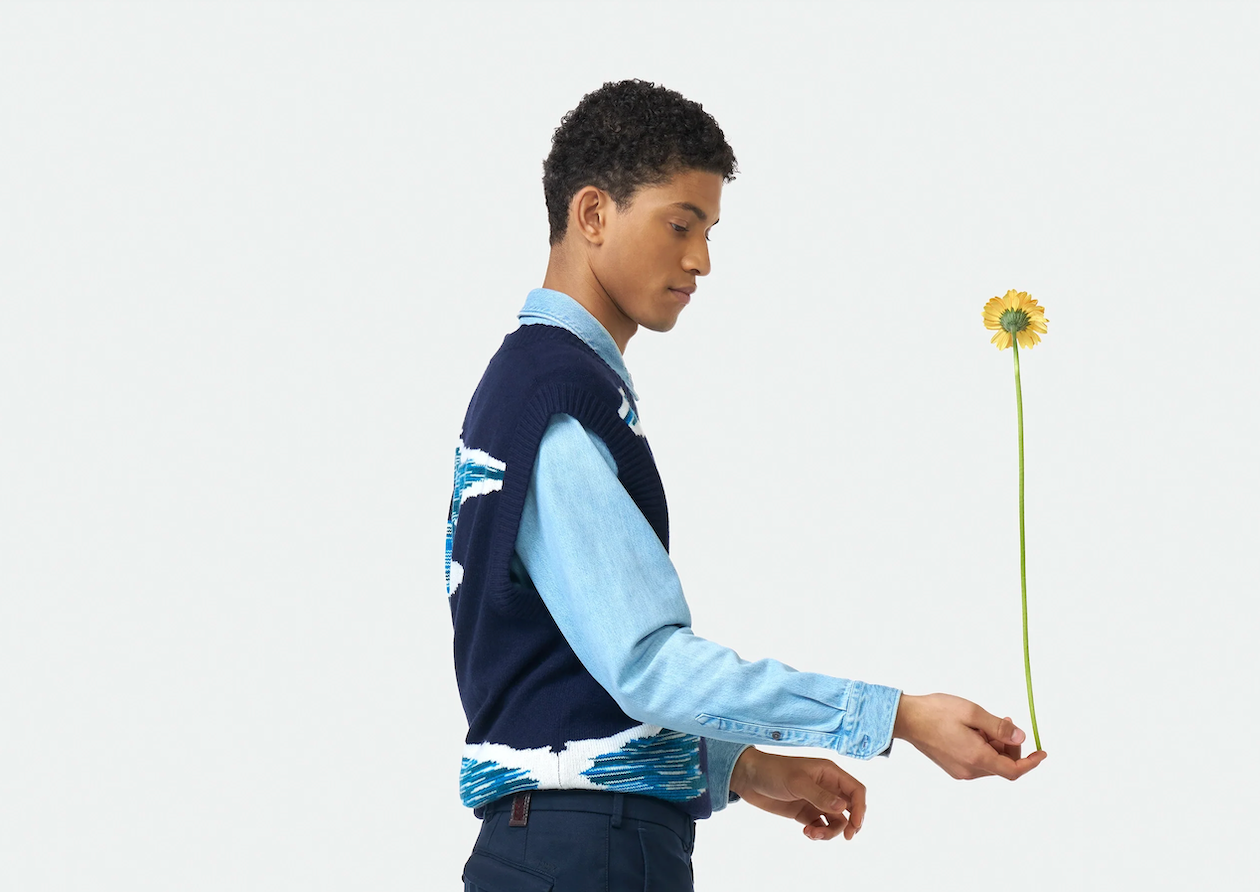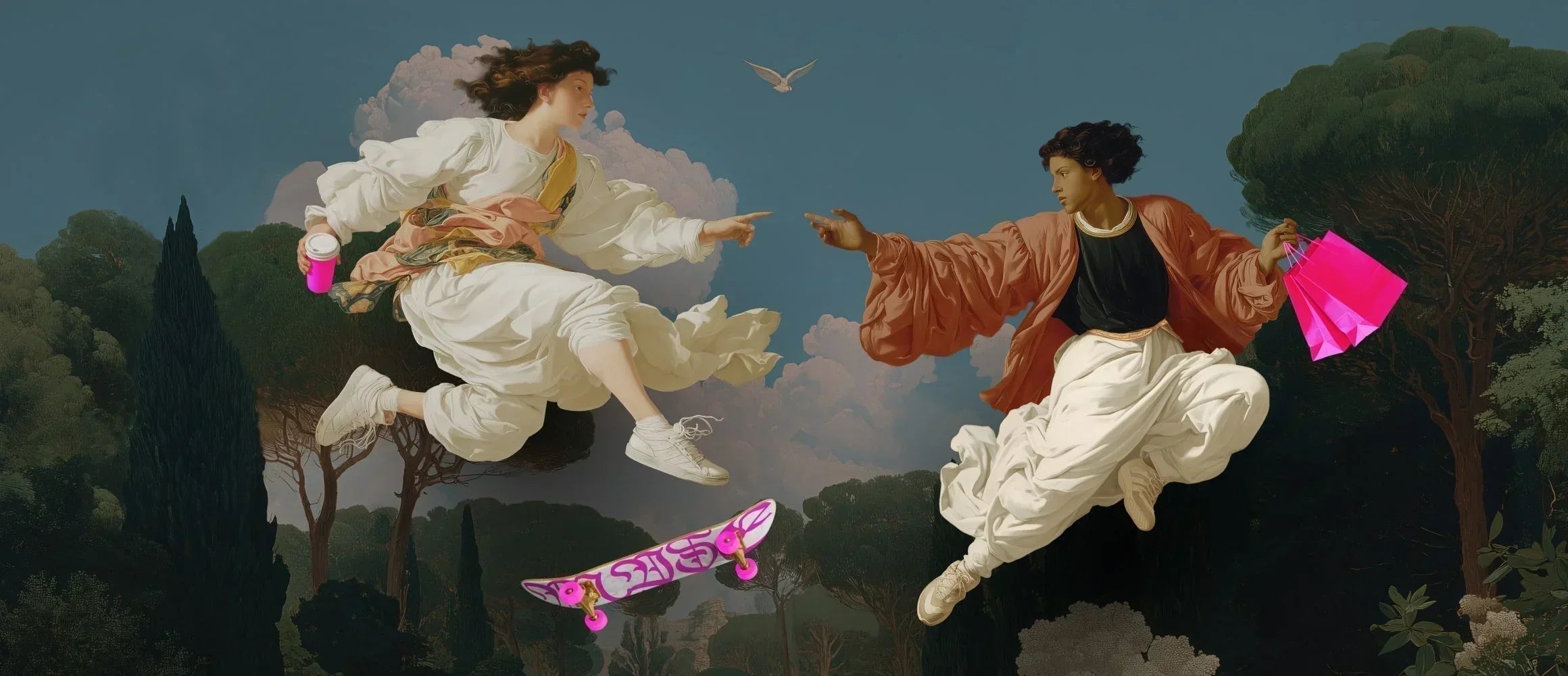
-
Shopify
+1
Klaviyo Vol 5: Solving Localised Double Opt-In at Scale
Klaviyo Vol 5: Solving Localised Double Opt-In at Scale
Fashion Metaverse

Seb Harris
The metaverse was once a term reserved strictly for the realm of science fiction. Whilst Mark Zuckerberg’s unforgettable Facebook rebrand video has brought it to the forefront of public attention, most people still believe the metaverse to be a far-off fantasy and not something happening right here, right now.
In this article we’ll take a look at how the metaverse is already a functioning cog in the e-commerce fashion wheel. Global brands all around the world are already making good use of metaverse technologies, and there’s a lot to learn from their leading example.
The total immersion in a digital world described by Zuck in his launch video might still be a way off, but the early editions of the metaverse are already here. E-commerce brands should take note and make use of the new tools available to them if they want to keep ahead of the curve.
So for those at the back who might not have heard the first time round, the metaverse is an idea that’s been around for a while and is gathering shape and speed at an ever increasing rate.
In the most fantastic, sci-fi version of events it’s a separate universe running parallel to our own in a digital space. Zuckerberg’s dream (nightmare?) is an inhabitable and unified digital space within which we interact with one another via virtual avatars. Much like The Matrix, it’s a fully immersive, computer-generated universe that we can all plug into and, depending upon who you believe, coexist in blissful utopia.
This version of the Metaverse doesn’t fully exist, some say it never will whilst others prophecise its inevitability. However there are metaverse technologies already in use that are becoming more advanced and more commonplace with each passing day. Let’s take a quick run through them.
Augmented reality or AR is perhaps the most common metaverse technology already in use today. It’s been around for years now and for the Snapchat generation it’s a familiar part of everyday life.
In short AR brings the virtual and physical worlds together, most commonly through our mobile devices. Using a phone or tablet camera and screen to mirror the capture and present the physical universe, AR technology adds extra layers of a digital world. Every time you’ve used a Snapchat filter to add bunny ears to an unsuspecting grandparent’s head, you’ve used AR technology.
Augmented realities are interesting because they’re freed from the unbreakable rules of our physical world. AR digital objects aren’t bound by the laws of physics and can move seamlessly through space, interacting with objects and/or people in the physical world in an endlessly inventive number of ways.
People’s features can morph to look like someone else, they can grow animal features, become more beautiful, grow older, look younger - in short, almost anything imaginable is achievable within the (albeit limited) confines of the screen within which the augmented world appears.
Alongside Snapchat and Instagram filters, perhaps the most widely recognisable application of AR technology is Pokemon Go, the widely popular mobile game that took the world by storm 5 or so years ago. Running around streets of their home cities chasing Charizards, this was the first time people across the world began to realise the potentials the future held for combining digital universes with the physical one.
We’re only at the tip of the proverbial iceberg so expect more immersive AR games and experiences in the not so distant future. It’s estimated that AR technologies will top 3.5 billion users by 2025 and spending through AR features will reach a global figure of $198 billion.
Shopify's advancements, particularly in its ability to manage multiple languages and currencies, are changing the game. With the roll-out of features like metaobjects, enhanced metafields, and Shopify Markets, native Shopify has stepped up in recent years. This shift is crucial for businesses considering the costs and complexities associated with maintaining a headless setup.


Virtual reality (VR) is another technology growing increasingly common, but still probably lacks behind AR in terms of accessibility. In the space of only a few years, VR headsets have gone from a niche product for the super rich to something we’re all more accustomed to seeing. However whilst almost everyone in Europe owns a smartphone, and subsequently has access to AR technology, the VR headset remains something more elusively exclusive.
So what is virtual reality? In a fairly self-explanatory fashion, it’s a reality built entirely in a virtual world. An immersive experience that plunges users into simulated virtual environments with varying degrees of interactive capabilities.
Some basic virtual realities allow users only to look around, remaining rooted to the spot. In others, you can walk but only on a set path. The most advanced VRs in existence right now allow users to explore virtual worlds any way they wish, but within a limited pre-mapped world.
Whilst AR technology is more accessible today, what sets VR apart is its potentially unlimited possibilities. Once the technology is in place to build inhabitable virtual worlds, VR users could (in theory) enter them and live out their existence without feeling the need to leave.
Right now the gaming industry is probably making the most use of VR possibilities, but it’s only a small step before e-commerce virtual realities become the new digital highstreet.
Virtual worlds are best described as shared virtual realities. When Mark Zuckerberg prophesied a unified metaverse that millions enter to interact with one another, he was describing a virtual world. His proposed metaverse is a virtual reality populated with multiple people simultaneously, within which they can interact and communicate with one another.
Avatars are an integral part of virtual worlds. They’re virtual representations of the user that are required to both explore the virtual world and identify other users. Avatars are currently the key route to commodifying virtual worlds and fashion brands are already selling unique and customisable items for avatars in virtual worlds. More on this later.
Interaction and communication are key facets of virtual worlds. In the best cases, communication is fluid and natural, and doesn’t depend upon text-based messaging. Users can physically speak to one another to share experiences and exchange information, just as in the physical world.
The best current examples of virtual worlds also come from the gaming industry. Fortnite is a global phenomenon that attracts users into an anarchic virtual world for a survival combat game. Since its inception the game has grown into more than just a ‘shoot em up’ as players can customise their avatars with unique skins (outfits) and weaponry. In 2021 Fortnite generated $5.8 billion in revenue, giving a glimpse into the future potential of virtual worlds.
With more of an idea about how the metaverse already exists today, in this section we’ll take a look at how some of the globe’s biggest, most identifiable brands are already making use of the technology.
Connecting with customers in new environments, making them feel part of a brand community and giving them memorable experiences are the key drivers behind all of the following excursions into the metaverse.


High-fashion powerhouse Balenciaga released their Fall 2021 collection via a virtual video game experience that saw players walk through an imagined futuristic wonderland. In Balenciaga: The Age Of Tomorrow players walk a predetermined path whilst passing virtual characters dressed in Balenciaga’s upcoming collection.
The brand collaborated with Dimension to build the fully immersive VR experience for its customers and community. Designed over five separate levels, the journey begins in a retail store, moves into a cityscape and then onto a futuristic bus that eventually takes off and transports players out of the city to outdoor environments. Eventually a white rabbit leads players to a secret rave (Matrix references, we see you), all the while surrounded by avatars wearing the new collection.
This novel and inventive way of releasing a new collection was a huge hit in the fashion world, democratising a fashion show that so often in the physical world is accessible only to the rich and famous. We predict this is only the beginning for events like this.
Balenciaga also participate in virtual worlds by collaborating with the aforementioned global sensation Fortnite. As we previously mentioned, Fortnite gamers can customise their avatars with unique skins and Balenciaga have designed a collection of virtual clothing for Fortnite characters.
A virtual Balenciaga store is situated on Retail Row, the shopping street in Fortnite’s battle royale mode, where players can enter and browse for the custom skins. To complete the full circle between the digital and the physical world, Balenciaga released a limited edition run of real-world clothing bearing the Fortnite logo.
By offering this holistic experience between the physical and virtual worlds, Balenciaga create a fully immersive brand world for their fans and customers. It’s a brilliant strategy for building a sense of community around a label and intense brand loyalty that will keep customers returning again and again.


From high-fashion to the high street, globally recognised brand Gap have an AR app that helps their customers buy online. DressingRoom is an app that uses AR technology to allow customers to virtually try on any item of clothing whilst shopping online.
After choosing a product, customers select one of give body types to see how the item will fit on a virtual avatar. The item is displayed through the screen of their mobile device, but the avatar appears as if standing in the room.
When buying online it can be difficult to judge how a piece of clothing will fall, or how the material will stretch and fit over the body. With this AR app Gap customers get more of an idea about these unknowns, giving them the added confidence that could make the difference in their decision to purchase.
The app was built in partnership with Avametric, a tech company specialising in build virtual avatars, and Google. Google is a long time innovator in AR technology and mobile visualisation, making them the perfect partner for such a venture.


Gucci have built their own virtual world within the Roblox metaverse. Roblox is an online gaming platform within which developers can build interconnecting worlds or games for users to explore. The Gucci Garden is Gucci’s space within this metaverse through which attendees can explore famous campaigns and collections.
Participants walk through the virtual space room by room, each a homage to a famous Gucci campaign of years gone by. Their avatar begins the journey as a blank canvas and as the participant walks they absorb elements from each room’s aesthetic. Every participant begins the journey at a randomised entry point, meaning each journey is different. The result is a unique virtual experience that’s visually reflected by the absorbed patterns and colours on the participant’s avatar.
Participants are invited to take virtual selfies and share their custom designed avatars on social feeds, extending the sense of brand community from the metaverse into the digital world of Instagram and Snapchat.


Nikeland is another virtual world built within the Roblox metaverse. Again, visitors to Nikeland have an avatar which they can dress in custom Nike branded products. Products are purchased through the Nike store and worn whilst visitors compete in the numerous sports-based games available in Nikeland.
The games are based on real-world sports but with a metaverse twist, often breaking the rules of physics and introducing new possibilities afforded by the virtual world. Nike aims to mirror real-world sporting events with custom games available in Nikeland. For instance when the FIFA World Cup or the Superbowl are approaching, relevant games will be introduced to Nikeland for customers to enjoy.
Nike truly see the metaverse as a new opportunity to encourage people to fall in love with the brand, using this not only to fuel digital sales but also to translate the brand loyalty to sales in the physical world as well.
In a world where supply-chain worries are increasing and new logistical headaches arrive almost weekly, the digital world offers a new arena for continuing to leverage growth for digital e-commerce brands.


Vans World is very similar to Nikeland. Another part of the Roblox metaverse, Vans World is a virtual skatepark based on significant real-world locations. House Of Vans, the Off The Wall skatepark and revered skate spots from all over the world come together in a unified virtual experience for skate lovers.
Not only a persistent virtual space for practice tricks and flips, Vans World is an online community hub for skaters to hang out and browse for exclusive Vans gear directly from the virtual store.
From designing their dream Vans shoe, building the ultimate virtual deck and customising their avatars in virtual Vans gear, Vans World visitors have a wide range of experiences available to them through this immersive experience.
Vans Vice President of Global Integrated Marketing Nick Street commented the following:
“Individual expression is deeply embedded in skate culture, and Vans has been supporting and enabling this exact type of creativity for more than 50 years. With the Vans World experience on Roblox, we are empowering creative expression in the digital world, bridging the gap between virtual and real-world fashion and sports in an accessible, inclusive way."
Whilst the brands we’ve provided here are at the top of the game in e-commerce fashion, we believe the metaverse should be embraced by fashion brands at all levels. The sooner you can get on board, the larger the gains you have to make, and we hope this serves as some inspiration for what’s currently possible with metaverse technologies.
The metaverse should be seen as a new opportunity to connect with consumers and continue building the same communities and relationships as already happens in the physical world. As the technology advances and becomes more commonplace, it will also become cheaper and more readily accessible to brands with more modest budgets than Nike or Gucci.
We recommend already planning ideas for what could be possible on the metaverse, putting yourself in the best possible position to hit the ground running. Having specialised in e-commerce fashion for years, we can see that the metaverse is the next big step for the industry.
We’re already preparing our team and our work for metaverse possibilities, so if you’d like to discuss more about what could be possible for your brand please get in touch for a free consultation.

Klaviyo Vol 5: Solving Localised Double Opt-In at Scale
Klaviyo Vol 5: Solving Localised Double Opt-In at Scale

The gap is widening
Shopify Winter '26 Edition: 10 Reasons Not Being on Shopify Is Now a Competitive Disadvantage

The early-access strategy that increased conversions to 33%
Klaviyo Vol 4: Travelteq’s WhatsApp Advantage
Stay ahead
Subscribe to our newsletter for a roundup of the latest in ecommerce, straight to your inbox.